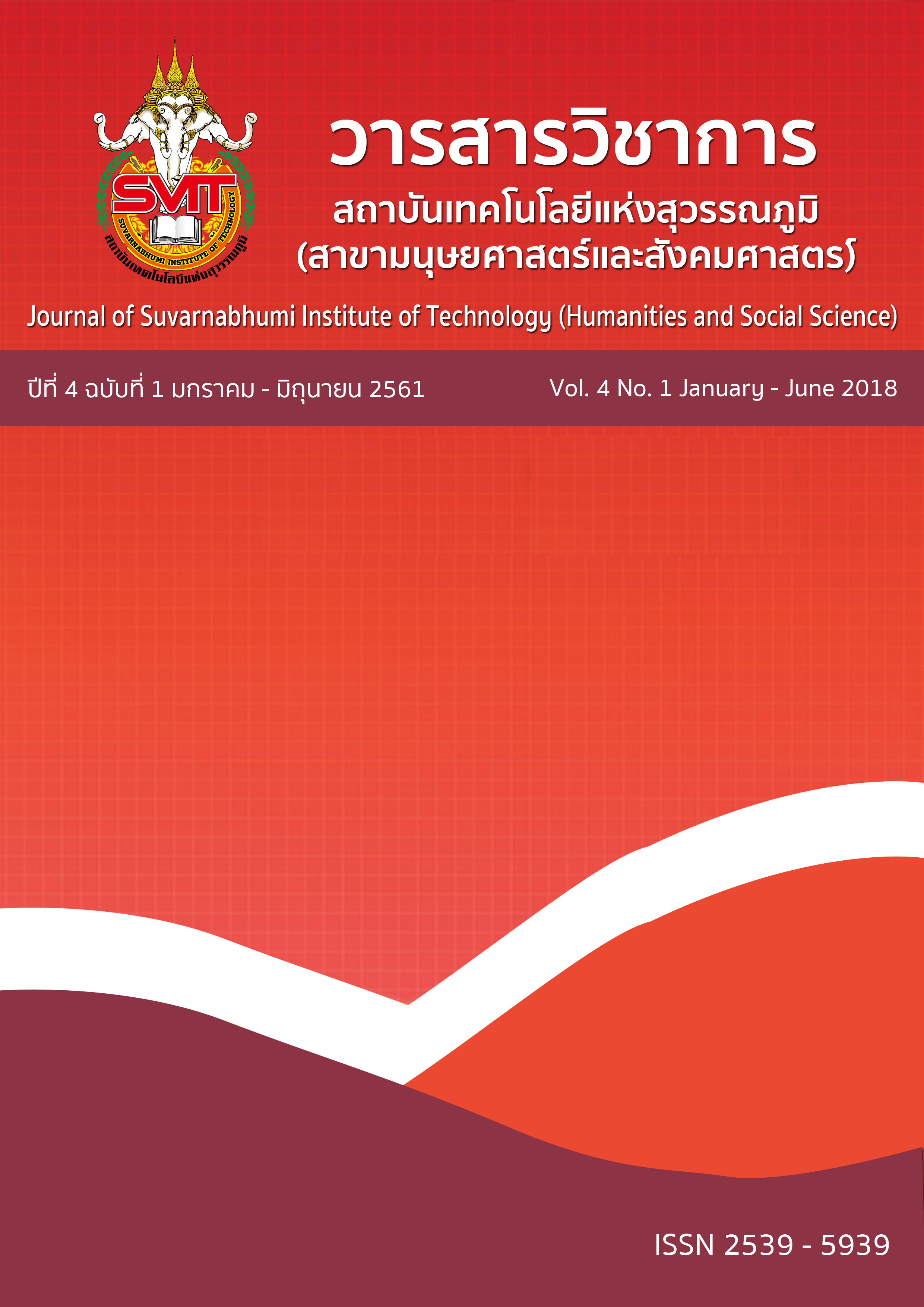CAUSES AND EFFECTS RELATED WITH CYBER BULLYING: A CASE STUDY OF CYBERVICTIM THAI YOUTHS
Keywords:
cyber bullying, youth violence, online violence, bullyingAbstract
This research aims to find out and understand the causes and effects of cyber bullying. Multiple case study was conducted
by in-depth interviews with 8 Thai youth aged 19-24 years. The results reveal that most of cyber bullying situations caused by relationship problem, peer conflict, victims did something that perpetrators were not satisfied. Some victim said the perpetrator told him that cyber bullying is only fun among friends. This is a very worrying attitude. In addition, cyber bullying caused by the risky behavior of youth who used online media to talk with strangers. For the impact of cyber bullying. The victims were affected by 6 issues 1) Cyber bullying was one of part that cause depression or promoted harder depression. 2) Cyber bullying was the part that makes the youth decide to commit suicide 3) The emotional impact, including stress, sadness, paranoid, unhappiness, emotional harm 4) Social impact including defamation be hated, insult 5) Impact on identity and personality and 6) Learning problems.
References
วัฒนาวดี ศรีวัฒนพงศ์; และ พิมผกา ธานินพงศ์. (2558). สื่ออิเล็กทรอนิกส์และอินเทอร์เน็ตที่มีต่อพฤติกรรมการรังแกของนักเรียนในโรงเรียน เขตอาเภอเมือง จังหวัดเชียงใหม่. วารสารการสื่อสารและการจัดการนิด้า. 1(2): 128-144.
วิมลทิพย์ มุสิกพันธ์; และศิวพร ปกป้อง. (2553). ปัจจัยที่มีผลต่อทัศนคติและพฤติกรรมการกระทำความรุนแรงทั้งทางกายภาพและการข่มเหงรังแกผ่านโลกไซเบอร์ของเยาวชนไทย. รายงานการวิจัย. กรุงเทพฯ: ปัญญาสมาพันธ์เพื่อการวิจัยความเห็นสาธารณะแห่งประเทศไทย.
องค์การยูนิเชฟ ประเทศไทย. (2559). Dtac Parent Guideคู่มือพ่อแม่ยุคดิจิทัลเข้าใจลูก เข้าใจโลกไซเบอร์. กรุงเทพฯ: องค์การยูนิเชฟ ประเทศไทย
Guo, Siying. (2016). A Meta-Analysis of the Predictors of Cyberbullying Perpetration and Victimization. Psychology in the Schools. 53(4): 432-453.
Hinduja, Sameer; Patchin, W. Justin. (2010). Bullying, cyberbullying, and suicide. Archives of Suicide Research. 14(3): 206-221.
Kowalski, Robin M.; Limber, Susan P.; & A gatston, Patricia W. (2008). Cyber bullying: bullying in the digital age. Massachusetts: Blackwell.
Mendoza, Madalyn. (2016). After suicide, a brother calls out bullying viral post urges all to end bullying, teach character. Retrieved April 5, 2017 from http://www.express news.com/news/local/article/After-suicide-a-brother-calls-out-bullying-6744050.php
Patchin, Justin W.; & Hinduja, Sameer. editors. (2012). Cyberbullying Prevention and Response: Expert Perspectives. New York: Routledge.
Ranney, Megan L.; et al. (2015). PTSD, cyberbullying and peer violence: prevalence and correlates among adolescent emergency department patients. General Hospital Psychiatry. 39: 32-38.
Rivituso, Jack. (2014). Cyberbullying Victimization among College Students: An Interpretive Phenomenological Analysis. Journal of Information Systems Education. 25(1): 71-75.
Vandebosch, Heidi; &Cleemput, Katrien V. (2008). Defining Cyberbullying: A Qualitative Research into the Perceptions of Youngsters. CyberPsychology& Behavior. 11(4): 499-503.
Weber, Nicole L.; & Pelfrey, William V., Jr. (2014). Cyberbullying: Causes, Consequences, and Coping Strategies. Texas: LFB Scholarly Publishing.
Wikipedia. (2017). List of suicides that have been attributed to bullying. Retrieved April 20, 2017, from https://en.wikipedia.org/wiki/List_of_suicides_that_have_been_attributed _to_bullying
Downloads
Published
Issue
Section
License
บทความที่ได้รับการตีพิมพ์เป็นลิขสิทธิ์ของวารสารวิชาการ สถาบันเทคโนโลยีแห่งสุวรรณภูมิ
ข้อความที่ปรากฏในบทความแต่ละเรื่องในวารสารวิชาการเล่มนี้เป็นความคิดเห็นส่วนตัวของผู้เขียนแต่ละท่านไม่เกี่ยวข้องกับสถาบันเทคโนโลยีแห่งสุวรรณภูมิ และคณาจารย์ท่านอื่นๆในสถาบันฯ แต่อย่างใด ความรับผิดชอบองค์ประกอบทั้งหมดของบทความแต่ละเรื่องเป็นของผู้เขียนแต่ละท่าน หากมีความผิดพลาดใดๆ ผู้เขียนแต่ละท่านจะรับผิดชอบบทความของตนเองแต่ผู้เดียว





